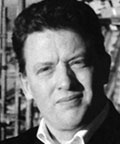Is the sketch superior to the computer-generated image?
Yes, says Alan Dunlop, a line drawing lasts the test of time; while Alice Scott thinks computer rendering is a more powerful tool.
YES

Alan Dunlop, architect
and academic

YES

Alan Dunlop, architect
and academic
Look at the work of the great architect draughtsmen and you will see that a finely crafted line drawing stands the test of time. They are a measure of the care that the architect feels for the commission. The drawings of Vilhelm Wohlert, no matter how sketchy or tentative, show extraordinary sensitivity in composition, weight of line and detail. Sadly, pencil and paper no longer centre in the creative act. Today’s designers often appear detached from the drawing process and it shows.
Paul Rudolph was a brilliant architect and draughtsman who saw architecture as “a personal effort”. His students at Yale were “encouraged” to help fill in elaborate texture and shadow for the master, sometimes working through the night for presentations to clients the next day. In response, they included their names in the drawing of bushes and trees, leaf and grass. Tedious perhaps but the finished drawings stand as works of art in themselves.
Paul Rudolph was a brilliant architect and draughtsman who saw architecture as “a personal effort”. His students at Yale were “encouraged” to help fill in elaborate texture and shadow for the master, sometimes working through the night for presentations to clients the next day. In response, they included their names in the drawing of bushes and trees, leaf and grass. Tedious perhaps but the finished drawings stand as works of art in themselves.
I encourage my students to hand draw and keep everything. It is important to experiment and to find your own style and I have had some success with students who have retreated from drawing. For others though, there is a reluctance to draw that amounts to a phobia.
There is challenge in acquiring this essential skill but any aspiring student or architect can find joy and reward in conquering the blank page. Attitudes might be shifting though. Recently, the biggest cheer in the University of Washington’s lecture hall went up when I said SketchUp was the spawn of the devil.
NO

Alice Scott, founding director, Squint Opera
Producing architectural imagery through computer rendering reflects designers’ search for a way to represent their vision in reality before it is built. By rendering architectural designs that mimic reality, images can appear as if real photographs, often seamlessly blending the photographic with the computer generated into one.
Beyond this, the technologies present an endless versatility in style and atmosphere; pushing the image to the hyperreal or rendering it as if a hand-drawn sketch.
Computer-generated imagery goes beyond the image on paper; its ability to be able to be displayed and distributed ad infinitum through different mediums, from the internet to the big screen means its versatility is boundless and its eco credentials are worthy. These images can be translated into engaging animation, eye-catching 3d stereoscopic and fully immersive gaming technologies.
Ultimately, the process of producing an image through computer technology assists design, giving one the ability to experiment with textures, materiality, volume, the way light falls and the ability to play and experiment with colour and style instantaneously.
Computer rendering does not replace the techniques of drawing; it is a tool – like a pencil but more powerful. Behind each computer image is an artist with as much creative ability as the artist who takes pencil to paper but whose knowledge of the intricacies and technicalities of all facets of architectural design comes to the fore.
Subscribe to:
Post Comments (Atom)


0 comments:
Post a Comment